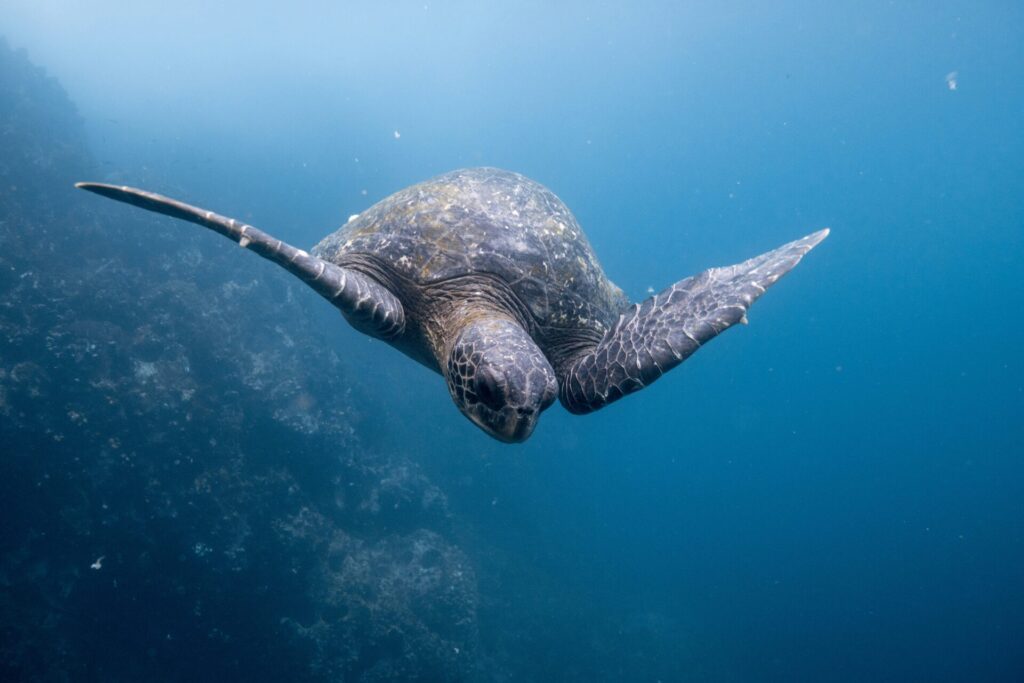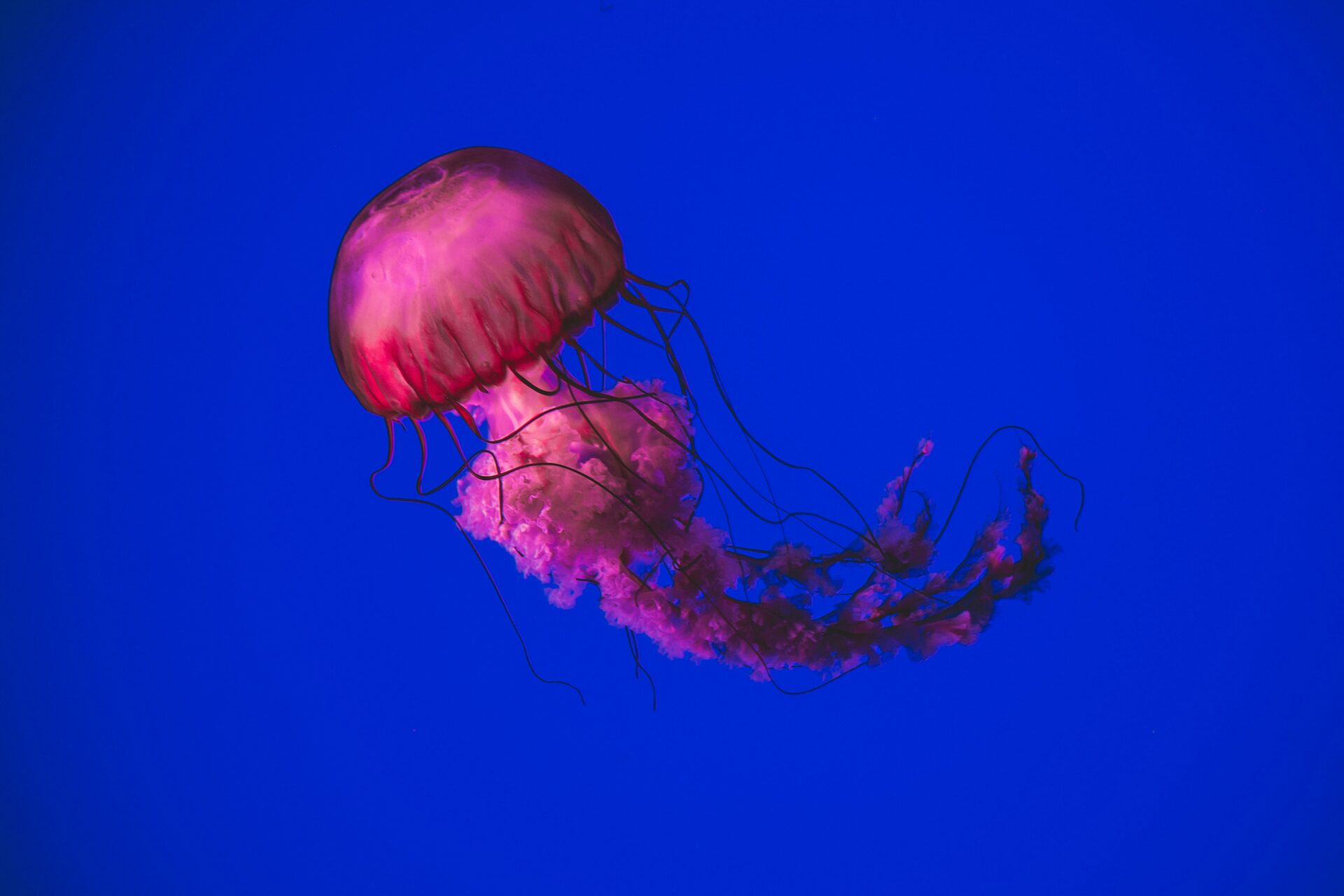In recent years, headlines about ‘jellyfish invasions’ have become almost seasonal: swarms shutting down Mediterranean beaches, giant Nomuras crippling Japanese fisheries, blooms clogging power plant intakes, and holiday makers fleeing stinging ‘armies’ along tourist coasts.
The reason isn’t mystery or some apocalyptic marine uprising. Jellyfish flourish in conditions that fish struggle to survive in: warmer waters, polluted and low-oxygen zones, overfished ecosystems with fewer predators, and coastal construction that gives their larvae more places to settle and grow. So the more we stress the ocean, the more it suits these gelatinous drifters perfectly.

But focusing only on the chaos they sometimes cause misses the bigger picture. Far from being useless drifters that sting, they play critical roles in marine food webs, nutrient cycles, and ocean health that we’re only beginning to fully understand.
The endangered leatherback sea turtle eats almost exclusively jellyfish. An adult can chomp through up to 200kg a day, a dietary devotion that keeps jelly populations in check
Often dismissed as little more than beach-ruining blobs or villainised for the occasional sting, jellyfish are, in truth, one of Earth’s oldest and most resilient lifeforms. They’ve outlived dinosaurs, survived all five mass extinctions, and all without a brain. Somewhere, natural selection must be laughing. But, they don’t need one. Their simple nerve net, which is a basic system that senses light, movement, and food, is so efficient it’s kept them thriving for over 500 million years.
Architects of the Ocean Food Web
But beyond their longevity, jellies are ecosystem engineers. Remove them, and marine life as we know it would begin to unravel. In her book Stung! Dr. Lisa-ann Gershwin explains that jellyfish are keystone species in some regions, and their sudden removal would destabilise predator–prey relationships and nutrient cycles.
It’s tempting to write these marine drifters off as little more than oceanic vacuum cleaners, hoovering up plankton, fish eggs, and larvae as they drift along. And yes, they are voracious predators but jellyfish are also a lifeline in the food web. More than 120 marine species rely on them for nourishment, while some juvenile fish even shelter in their tentacles, turning them into floating nurseries that help young fish survive.

The endangered leatherback sea turtle eats almost exclusively jellyfish. An adult can chomp through up to 200kg a day, a dietary devotion that keeps jellyfish populations in check. Tuna, sunfish, swordfish, seabirds, and even some whale species dine on them too, which means that when jellyfish thrive, entire marine food chains feel the ripple effect.
Jellyfish also act as nutrient couriers while alive. Many species migrate vertically through the water column, rising towards the surface at night to feed and descending to deeper, cooler waters during the day. This daily movement, known as diel vertical migration, helps transport carbon, nitrogen, and other nutrients between ocean layers, effectively redistributing energy throughout the marine ecosystem and supporting life far beyond the surface.
When jellyfish sink to the seabed in what scientists call ‘jelly-falls’, they deliver vital nutrients to deep-sea ecosystems that rarely receive fresh food
And their impact doesn’t end when their life does. In one of nature’s most overlooked recycling systems, jellyfish continue to support ocean life long after death. When large numbers sink to the seabed in what scientists call ‘jelly-falls’, these nutrient-rich bodies become a crucial food source for deep-sea ecosystems that rarely receive fresh nourishment.

One study published in Proceedings of the Royal Society B found that these jelly-falls can fuel deep-sea communities for weeks, feeding worms, crustaceans, and microorganisms that form the base of deep-ocean food webs.
Indicators of Ocean Health
Because they respond quickly to changes in temperature, salinity, and oxygen levels, jellyfish numbers can reveal the health of a marine system long before other species show visible distress.
A surge in jellyfish can indicate declining fish stocks, warming oceans, or increased pollution, but a sudden disappearance doesn’t automatically point to recovery. In some regions, it could signal a deeper ecological collapse, where even the most resilient species can no longer survive. They are, in their own silent way, the ocean’s early warning system.
In some regions, a surge in jellyfish could signal a deeper ecological collapse, where even the most resilient species can no longer survive. They are, in their own silent way, the ocean’s early warning system.
While jellyfish blooms often get a bad reputation, an increase in their numbers doesn’t always spell disaster. In some cases, more jellyfish can actually benefit marine ecosystems because of what they eat. Certain species feed on organisms that would otherwise upset the balance of the ocean like the larvae of invasive species that could spread rapidly if left unchecked, or zooplankton that graze heavily on phytoplankton.
When zooplankton populations explode, they can wipe out phytoplankton, the tiny ocean plants responsible for producing a large share of the world’s oxygen. By consuming zooplankton, jellyfish can help prevent harmful algal blooms, indirectly supporting oxygen production and keeping ecosystems in check.

Most jellyfish ‘booms’ today are human-made. Overfishing removes the predators that would normally keep jelly populations in check, while pollution and fertiliser runoff create low-oxygen ‘dead zones’ where fish struggle to survive but jellyfish flourish.
Add to that the rapid warming of the oceans – a climate shift that jellyfish tolerate far better than most marine species – and it becomes clear that their population surges are less an invasion, and more a consequence of the conditions we’ve created.
For creatures with no brain, no heart, and no central nervous system, jellyfish demonstrate an astonishing level of influence
Imagine a world without jellyfish. Sea turtles would lose their main food source. Deep-sea ecosystems would be deprived of jelly-falls. Fish nurseries would become exposed buffets for predators. Nutrient cycles would slow, impacting oxygen production and carbon absorption. The effects would ripple through food webs with alarming speed.
For creatures with no brain, no heart, and no central nervous system, jellyfish demonstrate an astonishing level of influence. Perhaps it’s time we rethink our relationship with jellyfish, not as nuisances, but as vital custodians of the ocean. They are survivors, nurturers, nutrient couriers, climate contributors, and ecological indicators. They keep systems functioning that would otherwise falter.
Next time you see one pulsing along the shoreline, resist the urge to recoil. What looks like a floating blob is, in fact, a quietly brilliant piece of ancient engineering.









